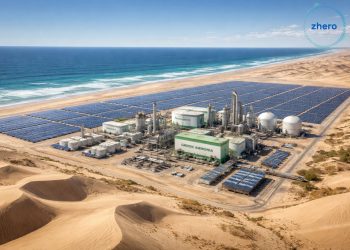
Namibia has imposed strict limits on the export of critical minerals, stating that a maximum of 1,000 kilograms can be exported annually per producer for mineral analysis purposes.
Additionally, exports for plant design parameters on lithium, cobalt, manganese, graphite, and rare earth elements are capped at 20,000 tonnes.
“Cabinet considered and endorsed a maximum export quantity of one thousand kilograms (1,000kg) for mineral analyses per annum per exporter/producer, and Cabinet further considered and endorsed a maximum of up to twenty-thousand (20,000) tonnes for the purpose of plant design parameters,” the Cabinet announcement said.
The Cabinet decision may have been influenced by the controversy surrounding Chinese company Xinfeng Investments, which was found to have exported 75,000 tonnes of lithium ore to China under the guise of testing purposes.
The decision, aimed at regulating the export of unprocessed critical minerals such as is in line with Cabinet Decision No. 8th/06.06.23/007, which grants Minister of Mines and Energy, Tom Alweendo discretion when it comes to the export of small quantities of the specified minerals.
This is expected to encourage local processing of these minerals and create jobs within the mining sector.
In November 2022, Namibia signed a deal with the European Union, ensuring the trade bloc’s access to the country’s rare earth metals to power the global transition to green energy.
In April 2023 German Chancellor Olaf Scholz announced Germany’s willingness to help Namibia set up local lithium processing infrastructure.
Meanwhile, a report by McKinsey & Company released in February 2024 indicated that Namibia’s lithium refining industry is forecasted to contribute N$3.1 billion to the country’s gross value added by 2030 while creating 5,800 jobs.
By 2050, the contribution is expected to rise to N$4.7 billion, with approximately 8,600 jobs created.
The comprehensive analysis outlines a breakdown of the economic impact, “with projections indicating direct contributions of US$59 million, US$57 million indirectly, and US$48 million induced by 2030.”
Moreover, the report foresees the creation of approximately 5,800 jobs, encompassing 1,300 direct, 2,300 indirect, and 2,100 induced positions.
Looking towards 2050, the figures escalate, forecasting a potential N$4.7 billion (US$248 million) in gross value added, “supported by US$89 million direct, US$86 million indirect, and US$72 million induced, along with the generation of around 8,600 jobs.” The report emphasised that with two active lithium projects and the assumption of two more becoming operational, Namibia’s lithium refining industry could boost mining production by 50%, resulting in substantial value addition.-







